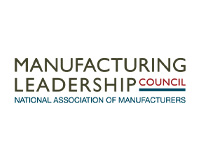Blockchain in Semiconductor Industry
With semiconductors evolving as the building block of all hi-tech products such as smartphones, appliances, etc., the innovations and advancements in this field directly impact all allied segments. With digitization and electronic mobility being the current trends in the technology landscape, semiconductors are finding applications in many devices. As the demand grows multifold, so will the complexities in the manufacturing & supply chain.
Enter blockchain, which has the potential to help ease many manufacturing pain points. Blockchain's distributed functionality, bundled security measures, and inherent features such as smart contracts, assist manufacturers in tracing goods, managing records transparently, and automating supply chain processes & payments. It also enhances collaboration among suppliers, manufacturers, and customers. In addition, integrating blockchain with IoT allows semiconductor companies to improve their predictive maintenance capabilities.
Blockchain Use Cases in Semiconductor Industry
Blockchain sets the stage for semiconductor manufacturers to enhance collaboration among suppliers, manufacturers, and customers. It helps protect IP, streamlines the supply chain and inventory replenishment, improves tracking and regulatory compliance, and reduces counterfeiting. By blending IoT with blockchain and AI/ML, Semiconductor companies can reduce batch-based updates and increase transparency & harmony in the value chain. Let's take a deep dive into each use case.
#1 Blockchain for Supply Chain Visibility
Both COVID and recent semiconductor shortages have underscored the need for deep insights on the immediate supply chain and the supplier's supply chain down to the source. The blockchain does just that, bringing all the stakeholders under one unified platform and enhancing transparency. The threat of disruption can be eliminated when there is clear visibility through multiple levels, from manufacturers to distributors and repair shops. As a result, the global blockchain supply chain market is slated to grow from US$253 million in 2020 to US$3,272 million by 2026, at a CAGR of 53.2% during the forecast period, according to the Markets & Markets report.
Implementing blockchain solutions help semiconductor companies to record price, date, location, quality, certification, and other relevant information to manage their supply chains effectively. The availability of this information within blockchain increases traceability of the material supply chain lowers losses from the counterfeit and gray market, improves visibility & compliance over outsourced contract manufacturing, and potentially enhances a semiconductor company's brand equity in the market.
Moreover, combining blockchain technology with Radio Frequency Identification (RFID) tag equipment enhances the visibility of wafer electronics along the supply chain. It helps verify the sources of raw material origins from the supplier, track & trace materials with unique data ID, and detect counterfeits if any.
Data is written onto an RFID tag, which can be encrypted and published through blockchain technology. Merging the blockchain technology with RFID tag equipment lets the manufacturers, suppliers, distributors, transporters, and customers create a single source of trusted information mechanism in the supply chain.
#2 Blockchain for Enterprise Collaboration
Businesses have started leveraging blockchain's intrinsic traits into their operations, such as security, integrity, and transparency. The versatile nature of blockchain permits companies to collaborate safely with business partners in a shielded environment. Blockchain solutions synchronize data between business partners, creating a shared and immutable record of data and transactions.
Acting effectively as a 'middleware' enables confidential and complex collaboration between enterprises without leaving any sensitive data on-chain. The blockchain network safeguards the privacy of all of the parties involved and strengthens the security and credibility of the transaction.
Offering stakeholders access to the same information in real-time, blockchain develops a trusted environment among the partners by sharing verified information on a shared ledger. This creates newer opportunities for semiconductor enterprises as well as their suppliers and assists them in navigating new value for many years to come.


